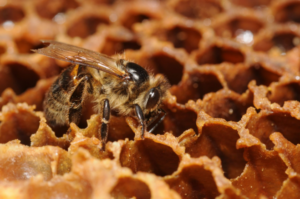Critically endangered species like woylies are more vulnerable than most.
Woylies are small, nocturnal marsupials endemic to Australia.
Foxes and cats, habitat loss and disease have pushed the species to the brink of extinction.
Woylie numbers fell from 225,000 to 10,000 – 15,000 in the last 15 years, according to Australian Wildlife Conservancy figures.
In WA, there are two wild populations left near Manjimup and Narrogin.
A few insurance populations exist, including in Woodland Reserve at Whiteman Park in Perth.
The aim of insurance populations is to establish and maintain colonies of healthy woylies that could be released back into the wild in the future, in case their wild populations died out.
When a major bushfire broke out in Whiteman Park in December 2014, woylies researchers feared the worst.

A DEVASTATING FIRE
Veterinarian Dr Stephanie Hing was studying woylies at the 200-hectare reserve at the time.
The fire burned 120ha of Whiteman Park and 90% of Woodland Reserve, including woylie nests.
“It was quite an emotional time,” Stephanie says.
Stephanie and other Murdoch Uni researchers helped search for surviving wildlife after the fire.
A handful of woylies died in the blaze.
“Luckily, it wasn’t the sort of carnage we were fearing, given the intensity of the fire,” Stephanie says.
“It was pretty remarkable that the survivors went to the unburnt patch [of bushland] and hid there until the fire was extinguished.”

“It was pretty remarkable that the survivors went to the unburnt patch [of bushland] and hid there until the fire was extinguished”
ASSESSING WOYLIE STRESS
Stephanie studied the relationship between stress, the immune system and infectious disease.
“When we’re stressed out, we’re more likely to get a cold or an infection because our immune system is down,” she says.
“I wanted to see if that was the case for other animals.”
The research published in the Australian Journal of Zoology is the first study of Australian wildlife’s stress response to bushfires.
So, how do you measure woylies’ stress levels?
“Like us, when we encounter something stressful, our bodies release certain hormones,” Stephanie says.
“These hormones get broken down in the body and end up in our urine and faeces.”
Stephanie collected poo from 19 woylies and measured stress hormone concentration.
She compared the results to 58 poo samples collected in June and October.
Woylies’ body condition and parasite infection were investigated to see if they were associated with stress hormone levels.
UNEXPECTED FINDINGS
Woylies were expected to have an acute stress response to extreme heat, smoke, loss of habitat and exposure to predators.
This stress was anticipated to impact their body condition and parasite load.
The results were surprising.
“Their stress hormones … weren’t significantly higher than before [the fire],” Stephanie says.
The findings suggest the species may have adapted to WA’s fire-prone landscape, which is fortunate seeing how we burn best in the West.
However, Stephanie says the study size was small, and care by reserve staff immediately after the fire may also have prevented stress from reaching levels that would impact woylies’ health.
Woylies remain vulnerable to extinction, despite possible adaptations to fire.
Research to better understand the impact of fire and other threats to woylies would help conservation efforts, Stephanie says.











